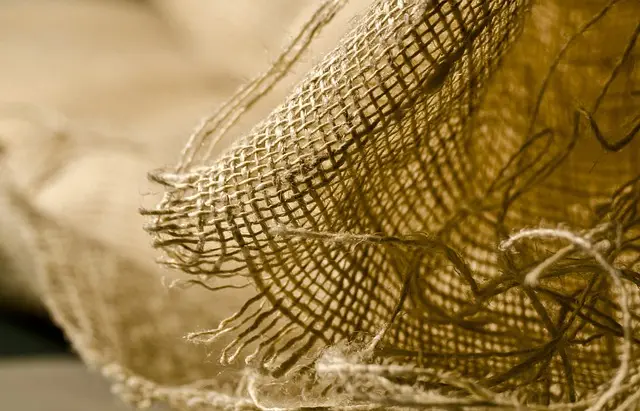Yellow Vein Kratom Powder is sourced from the kratom tree, native to Southeast Asia, and is distinguished by its yellowish leaves. This powder is renowned for its balanced alkaloid profile, which includes mitraphyne and 7-hydroxymitragynine, offering users a mild stimulant effect with pain relief and mood enhancement without sedative side effects. The seeds of the kratom tree, when cultivated under optimal conditions, can ensure sustainable access to this natural product. The careful drying process preserves the unique characteristics of the leaves, leading to a final powder that is prized for its enhanced focus, mental clarity, and subtle analgesic properties. It serves as a preferred alternative to over-the-counter pain relievers. The cultivation of kratom trees demands precise attention to detail from seed selection to mature tree care, including monitoring environmental stressors and pruning for optimal leaf yield. The result is a high-potency powder that reflects the meticulous journey of the kratom tree seeds from planting to market, offering consumers a distinctive experience compared to other vein varieties due to its specific biochemical composition and effects. It is essential to use kratom products responsibly and within the legal framework set by local laws and regulations.
Discover the unique properties of Yellow Vein Kratom Powder, a botanical derivative from the Kratom tree with a rich history and profound effects. This article delves into its potency, tracing its origins to the lush landscapes where the Kratom tree seeds are sown. We explore the intricate cultivation journey that transforms these seeds into the vibrant powder known for its balancing alkaloids. Join us as we unravel the science behind its distinctive hue and characteristic effects, offering insight into why it’s a preferred choice among Kratom enthusiasts.
- Unveiling the Potency of Yellow Vein Kratom Powder: A Glimpse into Its Origins and Effects
- Cultivation Chronicles: The Journey from Kratom Tree Seeds to Harvest
- Understanding the Alchemy: The Process Behind Yellow Vein Kratom Powder's Distinct Color and Characteristics
Unveiling the Potency of Yellow Vein Kratom Powder: A Glimpse into Its Origins and Effects

The kratom tree, a botanical marvel native to Southeast Asia, yields a potent variety known as Yellow Vein Kratom Powder. This particular strain derives its unique coloration from the way the leaves are harvested and processed—picked when they exhibit a yellowish hue, then carefully dried to preserve their distinct characteristics. The kratom tree’s seeds hold the potential to cultivate this variety, ensuring the availability of this natural resource for those who seek its effects. Yellow Vein Kratom Powder is renowned for its balanced alkaloid profile, which includes mitraphyne and 7-hydroxymitragynine, among others. This balance is what many users report as providing a milder stimulant effect compared to its red or green counterparts, yet with the added benefit of pain relief and mood enhancement without the sedative properties often associated with red vein strains.
The effects of Yellow Vein Kratom Powder are subtle yet significant. Users may experience an uplifting energy that promotes focus and mental clarity, ideal for those looking to enhance their productivity during the day. The strain’s analgesic qualities also make it a favorite among individuals seeking relief from minor aches and pains without the need for over-the-counter medications. Additionally, the mood-elevating properties of this kratom variety can contribute to an improved overall sense of well-being, making it a versatile choice for consumers looking for a moderate experience. As with all kratom products, it is essential to use them responsibly and in accordance with local laws and regulations.
Cultivation Chronicles: The Journey from Kratom Tree Seeds to Harvest

The cultivation of Mitragyna speciosa, commonly known as the kratom tree, begins with the precise selection and planting of high-quality seeds, which serve as the foundation for a successful crop. These seeds, sourced from mature trees with optimal alkaloid profiles, are carefully germinated in nutrient-rich soil under controlled conditions to ensure their healthy development. As the seedlings sprout and mature, they require a specific environment characterized by consistent humidity and temperature, which is crucial for their resilience and eventual alkaloid content. These early stages demand meticulous attention, as the trees’ vulnerability to environmental stressors is at its peak.
Once established, the kratom trees are nurtured over several months until they reach a sufficient size for harvest. The cultivation process involves regular pruning and training to encourage bushier growth, which increases leaf yield per tree. Farmers monitor the trees closely, assessing the maturity of the leaves by observing their color and texture changes, which indicate the alkaloid levels. This attentive approach ensures that the kratom leaves are harvested at peak potency. The trees are then allowed to undergo a recovery period before being harvested again, a practice that sustains the quality and consistency of the crop. The leaves are finally processed through drying and grinding into a fine powder, ready for distribution and consumption, marking the end of the kratom tree seeds’ journey from soil to shelf.
Understanding the Alchemy: The Process Behind Yellow Vein Kratom Powder's Distinct Color and Characteristics

Yellow Vein Kratom Powder is a unique variant of Mitragyna speciosa, commonly known as kratom, which possesses distinct characteristics and a characteristic golden hue. This coloration is not a mere aesthetic quirk but a reflection of the intricate and meticulous process involved in its cultivation and processing. The journey from kratom tree seeds to powder begins with the selection of optimal conditions for growth, which include soil quality, moisture levels, and sunlight exposure. These factors influence the alkaloid composition within the plant, particularly the balance of 7-hydroxymitragynine and mitragynine, both of which are naturally occurring compounds responsible for kratom’s effects.
Once the kratom trees mature and their leaves exhibit the yellow veins, a harvesting process carefully collects these leaves. The leaves are then dried indoors under controlled conditions to preserve the unique alkaloid profile that gives Yellow Vein Kratom its distinctive characteristics. During this drying phase, enzymatic reactions occur, influencing the oxidation and hue of the leaves. After drying, the leaves are crushed into a fine powder, which retains the yellow veins that are indicative of its unique alkaloid composition. This powder is what consumers encounter in the marketplace, offering a distinct experience compared to its green-veined or red-veined counterparts due to the specific biochemical makeup influenced by the initial growing conditions and the subsequent handling process.
In conclusion, Yellow Vein Kratom Powder emerges as a unique and potent variant of the kratom plant, with its origins, effects, and production processes offering insights into both its distinct nature and the meticulous cultivation required to produce it. From the careful selection of kratom tree seeds to the nuanced alchemical processes that bring out its golden hue, understanding the journey from seedling to harvest illuminates the depth of effort involved in creating this particular strain. This article has peeled back the layers of mystery surrounding Yellow Vein Kratom Powder, offering readers a clearer picture of what sets it apart from other kratom varieties. For those intrigued by the potential benefits and curious about the plant’s cultivation, the information presented here serves as both an introduction and a testament to the artistry and science behind this remarkable product.






